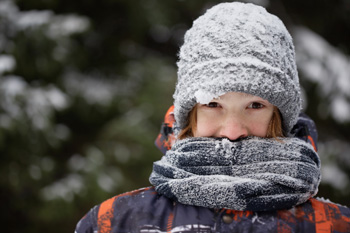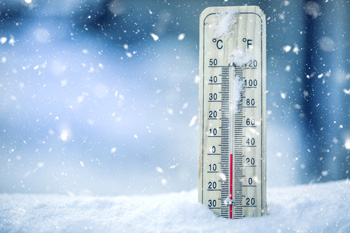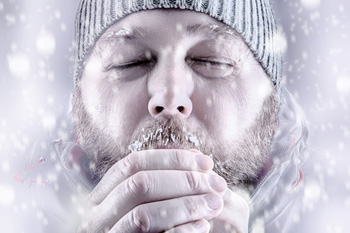Extreme Cold
- Get Prepared
- Nature Safety
- Current: Extreme Cold
Learn more at the Alternative-Heating Safety Tips page
Learn more at the Alternative-Heating Safety Tips page
According to the National Weather Service, 1,100 Americans died due to cold weather from 1988 to 2023. Prolonged exposure to bitterly cold conditions without proper clothing can increase the chances of frostbite and hypothermia. Practicing proper cold weather safety and understanding the warning signs of cold weather illnesses can help decrease the dangers of extreme cold weather.
Extreme Cold Safety Tips
Quick Tips
- Wear warm clothing to limit your exposure. Use a hat, coat, mittens, pants, socks and closed shoes.
- Stay indoors as much as possible and try to minimize travel.
- If going outdoors, bundle up and take frequent breaks in a warm shelter.
- Cold-weather illnesses such as hypothermia can occur at 40 degrees Fahrenheit. A few warning signs are numbness, extremely low energy, discolored skin and fumbling hands. If you notice any of these signs, take the person's temperature. If it is below 95 degrees Fahrenheit, get medical attention immediately.

Winter Clothing
It is crucial to dress appropriately with warm, durable clothing during extremely cold weather conditions. Decrease the chances of suffering from cold weather illnesses by wearing:
- A hat
- Earmuffs
- A scarf or knit mask to cover face and mouth
- Thermal clothing material that retains body heat
- A water-resistant or tightly woven coat
- Long-sleeved shirt and coat that are snug at the wrist
- Insulated and waterproof mittens
- Two layers of socks with boots or shoes that are waterproof and have a flexible sole

Weather Safety
Without taking proper preparations, extremely cold weather can quickly become dangerous. Avoid these dangers by practicing these tips:
- Stay indoors as much as possible and try to minimize travel. If traveling cannot be avoided, create a vehicle emergency kit in case of accidents or becoming stranded.
- Follow the manufacturer’s instructions of any alternative-heating sources being used at home, such as space heaters. Always turn off alternative-heating sources before going to bed or leaving home.
- Take frequent breaks in a warm shelter while working outdoors. It also helps to drink warm (non-caffeinated) beverages and eat high-calorie foods during these breaks.
- Remember to never leave animals, especially pets, outside without adequate shelter.

Hypothermia and Frostbite Symptoms
Hypothermia (abnormally low body temperature) and frostbite (freezing of body parts) are both cold-weather illnesses that can occur when an individual is exposed to extremely cold temperatures. Symptoms of hypothermia and frostbite can vary based on age, health, diet and amount of outdoor activity.
Hypothermia
- Uncontrolled shivering
- Slurred speech
- Clumsy movements
- Fatigue
- Confusion
Frostbite
- Discoloration of the skin
- Numbness
- Unusually firm or waxy skin
For more information about hypothermia and frostbite, visit the Centers for Disease Control and Prevention website.
Resources
Websites
- Cold Weather Safety for Older Adults
National Institute on Aging - Extreme Cold Safety Tips
National Weather Service - Prevent Hypothermia & Frostbite
U.S. Centers for Disease Control and Prevention - Protecting Employees From Cold Stress
U.S. Department of Labor - Winter Storms
Indiana Department of Homeland Security - Winter Weather
Ready.gov
